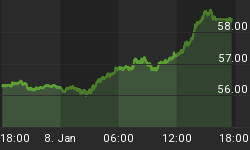10/26/2010 9:16:59 AM
The NASDAQ-100 ETF (QQQQ) showed a rare candlestick pattern that often marks a top in the market. Could it be?
Recommendation:
Take no action.
Daily Trend Indications:

- Positions indicated as Green are Long positions and those indicated as Red are short positions.
- The State of the Market is used to determine how you should trade. A trending market can ignore support and resistance levels and maintain its direction longer than most traders think it will.
- The BIAS is used to determine how aggressive or defensive you should be with a position. If the BIAS is Bullish but the market is in a Trading state, you might enter a short trade to take advantage of a reversal off of resistance. The BIAS tells you to exit that trade on "weaker" signals than you might otherwise trade on as the market is predisposed to move in the direction of BIAS.
- At Risk is generally neutral represented by "-". When it is "Bullish" or "Bearish" it warns of a potential change in the BIAS.
- The Moving Averages are noted as they are important signposts used by the Chartists community in determining the relative health of the markets.
Current ETF positions are:
Short DIA at $108.57
Short QQQQ at $49.66
Short SPY at $114.82
Daily Trading Action
The major index ETFs opened higher and then moved higher for a bit more than a half hour before rolling over. It would take only a half hour to give up all the gains from the open but the major indexes weren't going to close the opening gap. Instead the experienced choppy trading below the open but not much lower until a new rally began around 1:00pm. That rally would last until a dramatic sell-off on increased volume began in the final half hour of the session. It would last into the close taking the major indexes down to or below the gap up open. This left behind a distinctive candle for the NASDAQ-100 ETF (QQQQ) known as a Gravestone Doji. This is a particularly powerful candlestick often denoting a market top. The Russell-2000 (IWM 70.74 +0.42) again posted a fractional gain and the Semiconductor Index (SOX 360.78 +3.84) gained a full percentage point. The bank indexes lost more ground with the Bank Index (KBE 22.60 -0.21) losing one percent and the Regional Bank Index (KRE 22.80 -0.38) losing even more. The 20+ Yr Bonds (TLT 101.67 +0.29) registered a slim gain as fixed income investors try to determine if they are in or out of the fixed income trade. NYSE volume was light with 1.005B shares traded. NASDAQ volume was also light with 1.756B shares traded.
There was a single economic report of interest released:
- Existing Home Sales (Sep) came in at 4.5M versus an expected 4.25M
The report was released a half hour into the session and although trumpeted by the media initially, the story quickly turned as it 35% of the sales were delinquency sales (Foreclosures) and this number was raised by the final availability of the homebuyers tax credit. Following this, the market began its dive lower.
The U.S. dollar opened lower helping to power the higher open but finished with just a 0.5% loss.
Eight out of ten economic sectors in the S&P-500 moved higher led by Materials (+1.7%). Financials (-0.4%) and Utilities (-0.3%) moved lower.
Implied volatility for the S&P-500 (VIX 19.85 +1.07) gained five percent and implied volatility for the NASDAQ-100 (VXN 21.48 +1.06) gained a similar amount. It is unusual for implied volatility to move up when the market closed up but the faith of the bulls appears to have been shaken.
The yield for the 10-year note was unchanged closing at 2.56. The price of the near term futures contract for a barrel of crude oil rose $eighty-three cents to close at $82.52.
Market internals were positive with advancers leading decliners 7:4 on the NYSE and by 3:2 on the NASDAQ. Up volume led down volume by less than 2:1 on both the NYSE and the NASDAQ. The index put/call ratio rose 0.33 to close at 1.45. The equity put/call ratio fell -0.06 to close at 0.63.
Commentary:
Monday saw a positive close but there were several things to note:
1) One thing to note was that none of the major indexes were able to hold onto their gap uo openings. This included the significant Gravestone Doji left behind by QQQQ.
2) Volume increased from the anemic levels seen on Friday but was still light.
3) Implied volatility rose significantly as the market closed higher.
4) Selling pressure into the close was on a significant increase in volume.
5) The index put/call ratio climbed while the equity put/call ratio declined suggesting that professional investors are hedging as retail investors are oblivious to the danger.
6) Financials continue to be pressured with the bank indexes again selling off on an up day for the market.
7) The S&P-500 reversed a psychologically important resistance level and were never able to challenge that level again.
The fly in the ointment for the bearish case is that bonds haven't yet committed to a strong move higher that would suck capital out of the equity markets. Patience is key here.
We hope you have enjoyed this edition of the McMillan portfolio. You may send comments to mark@stockbarometer.com.
















